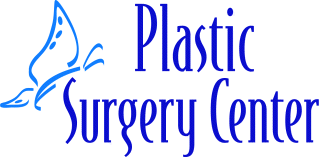|
 | Meet The Doctor |  | Dr. Smith's Resume |  | The Importance of Board Certification |  | Surgical Procedures |  | Aesthetics |  | Injectables |  | Image Gallery |  | Products |  | Contact Us |
Nose Refinement (Rhinoplasty and/or Septoplasty) Rhinoplasty, or nasal surgery, is popular among men and women who are dissatisfied with the size and/or shape of their nose. Being such a prominent feature, the size and shape of the nose may be the most defining characteristic of one's face. Dr. Smith performs rhinoplasty for both cosmetic and functional (breathing) indications. Rhinoplasty surgery frequently involves the external appearance, as well as the internal structure and breathing apparatus. Typical Reasons for Rhinoplasty Include: · Decreasing or Increasing the Size · Removing the Bump · Narrowing the Nose · Increasing or Decreasing the Projection · Correction of a Crocked Nose · Correction of a Hanging or Drooping Tip
Conditions requiring rhinoplasty may be a result of natural causes, birth defects or traumatic deformities. Frequently, patients who desire rhinoplasty are concerned that their nose appears too large or out of proportion to the face. The nose and chin are important balancing features of the profile, and can often affect one's appearance. A small, flattened or receding chin may also be a contributing factor to a patient's complaint of an "unattractive profile." For these reasons, chin enlargement or augmentation or a chin implant may be considered and discussed at the time of the nasal surgery consultation as this procedure is frequently performed at the same time as rhinoplasty to improve and balance the facial proportions. Before performing rhinoplasty Dr. Smith always works with the patient to agree on a treatment plan. The objective of nasal surgery varies with each individual patient, and the ideal nose varies from face to face depending on skin type, ethnic background, facial shape and proportions. The end result of rhinoplasty should reflect the agreed upon plan, and the nose should be completely natural in appearance. It should never look "operated on." Rhinoplasty can be performed after the mid-teens, when the growth spurt has ended. Deformities of the nose can be corrected by adding to, removing, reshaping and/or rearranging bones and cartilage. Rhinoplasty can be accomplished through a closed technique, where incisions are made inside the nose only. Dr. Smith performs closed nasal surgery with more minor rhinoplasty procedures, such as removing a nasal hump or narrowing the nasal bridge. For more extensive rhinoplasty procedures, Dr. Smith generally prefers an open approach, in which an incision is also made across the columella (the skin bridge between the nostrils), which connects the internal incisions. Dr. Smith believes this approach to rhinoplasty is unparalleled for exposure and accuracy for precision work with greater predictability in results. The resultant scar is generally near imperceptible. It is also at times desirable to narrow the nostrils, which generally leave near imperceptible scars as well. The degree of nasal improvement through rhinoplasty depends on the basic structure of your nose and skin, as well as on the operative plan that is applied. At the Plastic Surgery Center, the goal is not to give you a new nose, but to improve and enhance your old nose in a natural way that compliments your face. Rhinoplasty procedures are performed in an outpatient surgical facility. Rhinoplasty can be comfortably performed using local anesthesia with I.V. sedation or under general anesthesia. It generally takes 2 to three hours. Postoperatively there is usually a nasal splint, sutures (stitches) and nasal packing. Nasal packing is removed in two to four days. The splint is removed in five to seven days. Internal sutures dissolve by themselves and external sutures, if used, are removed in five to seven days. Swelling and bruising around the eyes, nose and cheeks are common. Bruising is usually gone in one to two weeks. Once Dr. Smith has seen you for a consult, performed a thorough examination, and reviewed your medical records and medical history, he will be able to recommend which options are best indicated for you.  |
 | Meet The Doctor |  | Dr. Smith's Resume |  | The Importance of Board Certification |  | Surgical Procedures |  | Aesthetics |  | Injectables |  | Image Gallery |  | Products |  | Contact Us |

